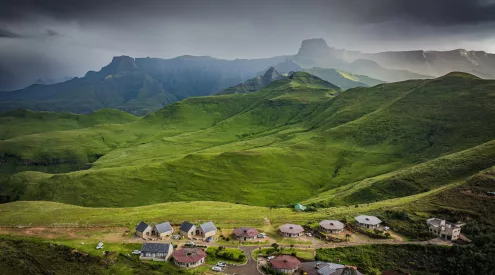Antarctica is one of the cleanest places on the planet, however it could be a whole lot messier if it wasn’t for the adherence to the strict rules in place to make sure that all rubbish, including human waste, is disposed of in a way that leaves the continent as pristine as possible.
In summer the population of people in Antarctica grows to about 5,000 when researchers and support staff settle in to do their work, while the number of tourists that visit in one season can be as high as 40,000 – resulting in lots of human poop.

The field camp for researchers studying seals is set up on the sea ice in the lee of Big Razorback at the foot of Mount Erebus. Every year researcher Jay Rotella and his team spend six weeks at the field camp counting and tagging newborn seals. Image credit: Mike Lucibella/ National Science Foundation
Some bases have flushing loos, such as the United States Antarctic research center McMurdo Station, situated on Antartica’s Ross Island south of New Zealand. It even has its own waste treatment plant complete with two JWC Environmental Muffin Monster grinders that mash up the waste. The particles then get disinfected through a UV process. The liquified end-product gets pumped into the ocean. Any leftover solid waste is shipped back to the US on cargo ships.
The McMurdo Station is the largest research station out of about 50 on the continent and accommodates an average of 850 visitors during the busy summer season, which translates to a whole lot of human waste.
For decades, the station macerated its poop (reduced it to smaller particles) and then released the byproduct directly into the ocean. In 1989, an America official told The New York Times that waste disposal in Antarctica used to be a ‘disgrace’, but since 1983 they’ve been ‘correcting the sins of earlier generations’.

The evening colours of late summer at Ross Island. The land at right is Hut Point Peninsula with Discovery Hut and Vince’s Cross visible. The Royal Society Range can be seen in the distance across McMurdo Sound. Image credit: Kira Morris / National Science Foundation
Out in the field, all researchers need to use poo buckets and pee bottles and in certain spots, both China and the US use ‘rocket toilets’ (officially known as incinolets) that incinerate the waste, leaving only ash.
Karla Smith, a volunteer who arrived in Antartica from New Zealand, said in a blog post titled What To Do With Poo When At The Bottom Of The World? that ‘When we arrived in the field we had to build our toilets using ice blocks’. She described the ablutions by referring to one of her photos of a red bucket and white container with a funnel. ‘You’ll notice that there are two main receptacles in the photo, as well as a bottle. Unsurprisingly, the P barrel and funnel, is for pee. The bucket is for poo. That’s right folks, you need to separate things out… The pee gets treated at Scott Base (more on that later), whilst the solids get shipped back to New Zealand, and then incinerated.’
Also read: Everest climbers to carry own faecal waste
According to Smith, after the red buckets’ contents are shipped to New Zealand for incineration, the buckets are disinfected and reused. The pee barrels are stored at Scott Base (ideally frozen) and the staff staying there during the winter will slowly dispose of it into the wastewater system.
A South African document titled The South African Antarctic and Southern Ocean Research Plan 2014 – 2024 states, ‘Waste generated as the bases in the Southern Ocean and on Antarctica is kept isolated from the general environment for extended periods of time,’ although it does not go into detail about the disposal of waste. However, this method is used in keeping with the standards set out in the Antarctic Environmental Protocol.
Australia’s research stations have flush toilets and according to the the Australian Antarctic Division (AAD) Davis Station they ‘use germ-zapping technologies to process wastewater into drinkable-quality water that will have minimal impact on the marine environment when it’s discharged into the ocean.’
Feature image: Mike Lucibella/ National Science Foundation





















